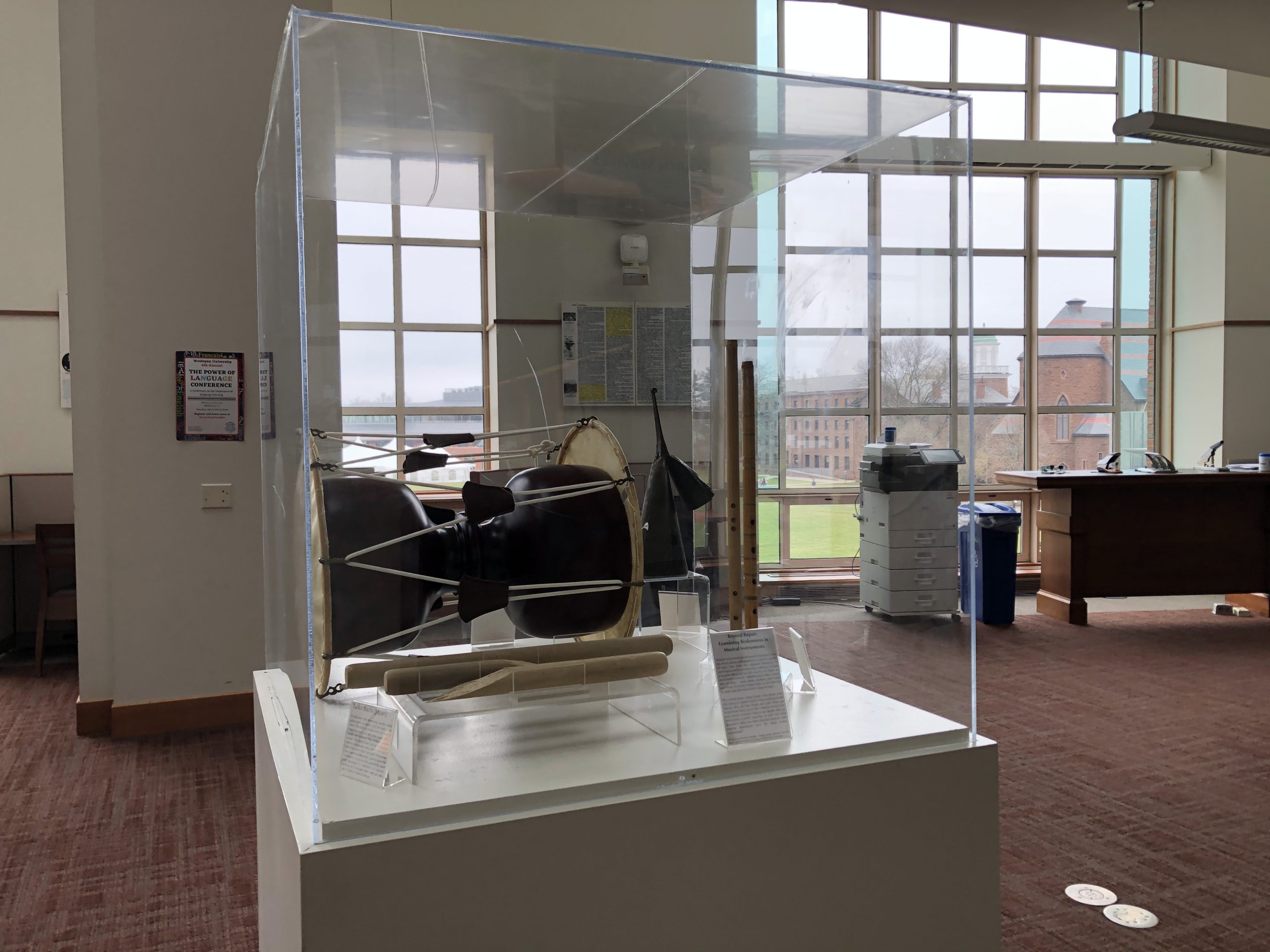Musical instruments are designed to be played: to be hit, struck, blown, and handled by humans in a variety of ways. Over time, this repeated interaction in combination with environmental conditions can have a tangible effect. Just as with any physical object, an instrument’s material – whether wood, metal, animal skin, or other – wears down, weakens, and breaks over time. Sometimes these issues can be fixed, but in other cases the instrument is beyond repair.
This exhibit draws these broken instruments from the trash as an opportunity for close examination and inquiry. Why do they break, and how? What can brokenness reveal about their material construction and cultural contexts? How do we decide when an instrument is worth repairing, or not? And while disposal is often the most practical solution, what creative alternatives exist for these broken instruments?
This exhibit is not intended to be a warning to take better care of our instruments nor a lament to lost objects, although there is much potential for discussions of these topics. Rather, examining this collection gives us an opportunity to reflect on the value, materiality, function, and meaning of these instruments, and how these qualities can change over time. Closely engaging with objects that would otherwise be destined for the garbage also helps us understand our relationships with other broken objects beyond instruments: What do we choose to repair? What do we choose to dispose of and why?
In this exhibit, we examine a collection of four different instruments from several Wesleyan performing ensembles – a Korean janggo, a pair of Japanese bachi, a Ghanaian gankogui, and two Javanese suling. We hear from ensemble directors about their experience playing and maintaining these instruments at Wesleyan and learn about the instruments’ material composition and cultural backgrounds. Through these discussions, we explore how they break, why they break, and at what point they can or cannot be repaired.
While Wesleyan’s campus is closed to the general public due to Covid restrictions, we welcome all visitors to explore this virtual exhibit. Please click on the links below to read more about the instruments:
_____________
Credits:
Exhibit curation and text by Devanney Haruta, MA candidate in Ethnomusicology
All photos by the author unless otherwise cited.
Devanney Haruta is a second-year Ethnomusicology MA student, currently writing her thesis on piano destruction in art and music. She has worked as the teaching assistant for Wesleyan’s World Instrument Collection and helped develop a new website for the collection’s Virtual Instrument Museum. Her research interests include musical instrument interfaces, performance techniques, and materiality.
Special thanks to:
Aaron Bittel
Eric Charry
John Dankwa
Jennifer Hadley
Jin Hi Kim
Marvin McNeill
Wendi Field Murray
Jessie Steele
Sumarsam
Andy Tan
Yu Kai Tan
Fumi Tanakadate
Emily Voss


